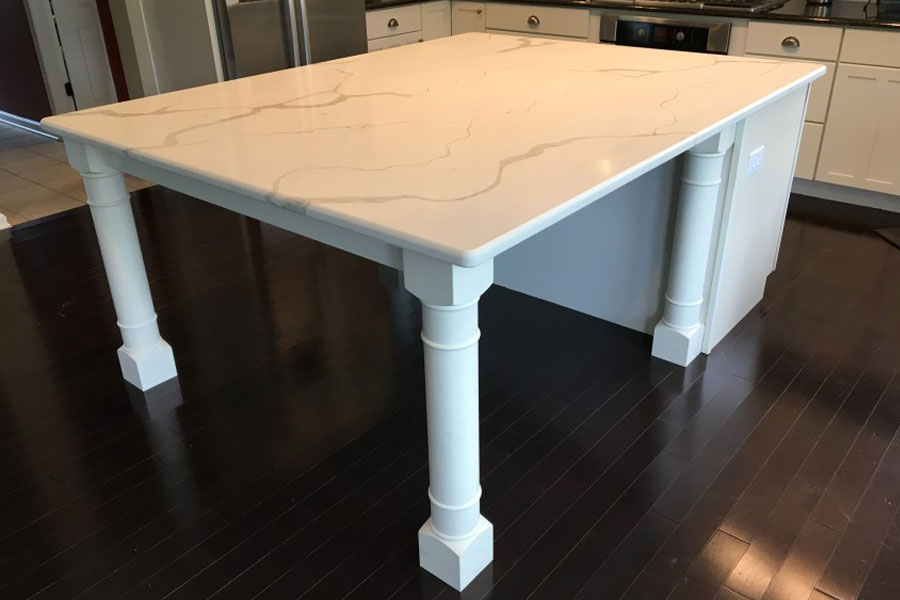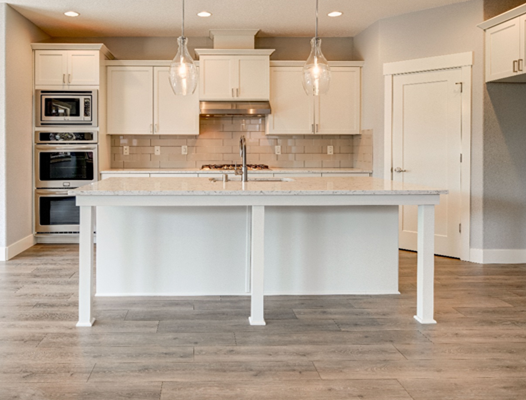An Overview to Choosing the Ideal Cooking Area Island for Your Home
Recognizing your cooking area's spatial dynamics is the initial step, making sure that the island fits effortlessly without interfering with the flow. The option of surfaces and materials also plays a necessary function in integrating the island with your cooking area's overall layout.
Evaluating Your Room
Before picking a kitchen area island, it is vital to extensively evaluate your space to guarantee the addition will be both functional and visually pleasing. Begin by determining the readily available area, consisting of the width, length, and elevation of the kitchen area. Exact dimensions are important to prevent buying an island that overwhelms the space or one that is overmuch little.
Think about the existing design and just how the island will certainly incorporate with the present web traffic flow. A well-placed island ought to not obstruct paths or restrain access to important appliances, such as the refrigerator, sink, and oven. Leave ample clearance space-- generally around 36 to 48 inches on all sides-- to permit for comfortable motion and work space effectiveness.
Next, evaluate the natural light and sightlines within your cooking area. An island that blocks a home window or interferes with visual cohesion can make the area really feel cramped and dark. Believe about just how the island's positioning will certainly influence lights and presence, ensuring it improves rather than detracts from the kitchen's ambiance.
Identifying the Objective
Identifying the function of your kitchen area island is an essential action in ensuring it fulfills your certain needs and preferences. Prior to diving into style or size factors to consider, it is vital to clarify what key function the island will certainly offer in your kitchen. Will it be a main hub for dish preparation, a casual dining area, or possibly an extra storage space option?
For those who delight in cooking, integrating devices such as a cooktop or sink may be essential. Furthermore, enough counter area for cutting and blending, along with available storage for kitchen tools and active ingredients, can transform the island into an efficient workstation. Conversely, if the island is planned to assist in social communications or offer as an eating location, seating setups come to be vital. In this situation, making certain adequate legroom and surface area for comfy dining experiences is vital.

Picking the Right Size
Selecting the ideal dimension for your cooking area island is a balance of performance and room optimization. An ideal cooking area island must offer sufficient office while making sure that movement around the kitchen continues to be unimpeded. Begin by determining your cooking area room; a minimal clearance of 36 to 42 inches around the island is required to permit comfy motion and availability.
The measurements of the island ought to reflect its desired use. If the island will offer largely as a prep location, a width of 24 to 36 inches could be adequate.

Lastly, make sure that the island's size matches the general kitchen layout, preventing any frustrating visibility that may diminish the kitchen area's visual and utility - kitchen island legs. Mindful preparation and exact dimensions will certainly help you accomplish a unified and reliable cooking area atmosphere
Deciding On Products and Finishes
After determining the proper dimension for your cooking area island, the following step involves picking ideal products and finishes. The option of products significantly affects both the aesthetic charm and performance of your cooking area island. Popular materials for countertops consist of butcher, quartz, and granite block, each offering unique advantages. Granite, known for her response its resilience and classic elegance, is highly immune to scratches and heat. Quartz, a crafted stone, provides a non-porous surface that resists bacteria and discolorations. Butcher block, made from wood, adds a warm, rustic charm and is optimal for food prep work.
Along with the counter top, take into consideration the products for the island base. Strong wood supplies a traditional, tough look, while stainless steel offers a smooth, modern appearance and is simple to clean. Painted finishes can introduce a dash of color, with options varying from soft pastels to strong, vibrant colors.
Pay interest to the sturdiness of finishes, especially in high-traffic areas, to maintain the island's appearance over time. Choosing the ideal products and surfaces will certainly enhance both the functionality and visual charm of your kitchen area island.
Integrating Functional Functions
Incorporating functional features into your kitchen island can significantly boost its utility and ease, transforming it right into a functional centerpiece of your kitchen area. One essential function to consider is added storage. Integrating cupboards, drawers, and open shelving can provide much-needed area for kitchenware, utensils, and small home appliances, helping to keep a clutter-free environment.
An additional valuable enhancement is a built-in sink or cooktop, which can enhance meal preparation and clean-up procedures. A sink can facilitate tasks such as cleaning vegetables and cleansing dishes, while a next page cooktop can permit for food preparation directly on the island, cultivating a much more interactive and social cooking experience.
Consider integrating seating alternatives, particularly if your kitchen area functions as an informal dining area. Bar feceses or integrated benches can change the island right into a multifunctional area for dishes, research, or laid-back gatherings.
Finally, incorporating electrical outlets into your kitchen island can boost its functionality. Electrical outlets give hassle-free accessibility for little kitchen home appliances, charging stations for digital devices, and extra illumination alternatives.
Final Thought

Prior to choosing a kitchen area island, it is crucial to completely examine your area to make certain the enhancement will be both practical and aesthetically pleasing.Choosing the right dimension for your kitchen area island is a balance of functionality and area optimization. kitchen island legs. A perfect cooking area island ought to provide ample work space while ensuring that motion around the cooking area continues to be unobstructed.Integrating functional functions into your kitchen area island can substantially enhance its energy and benefit, changing it right into a flexible centerpiece of your cooking area.In verdict, choosing the optimal cooking area island requires an extensive assessment of the offered space, clarity concerning its primary Read Full Report feature, and careful factor to consider of the appropriate size and products